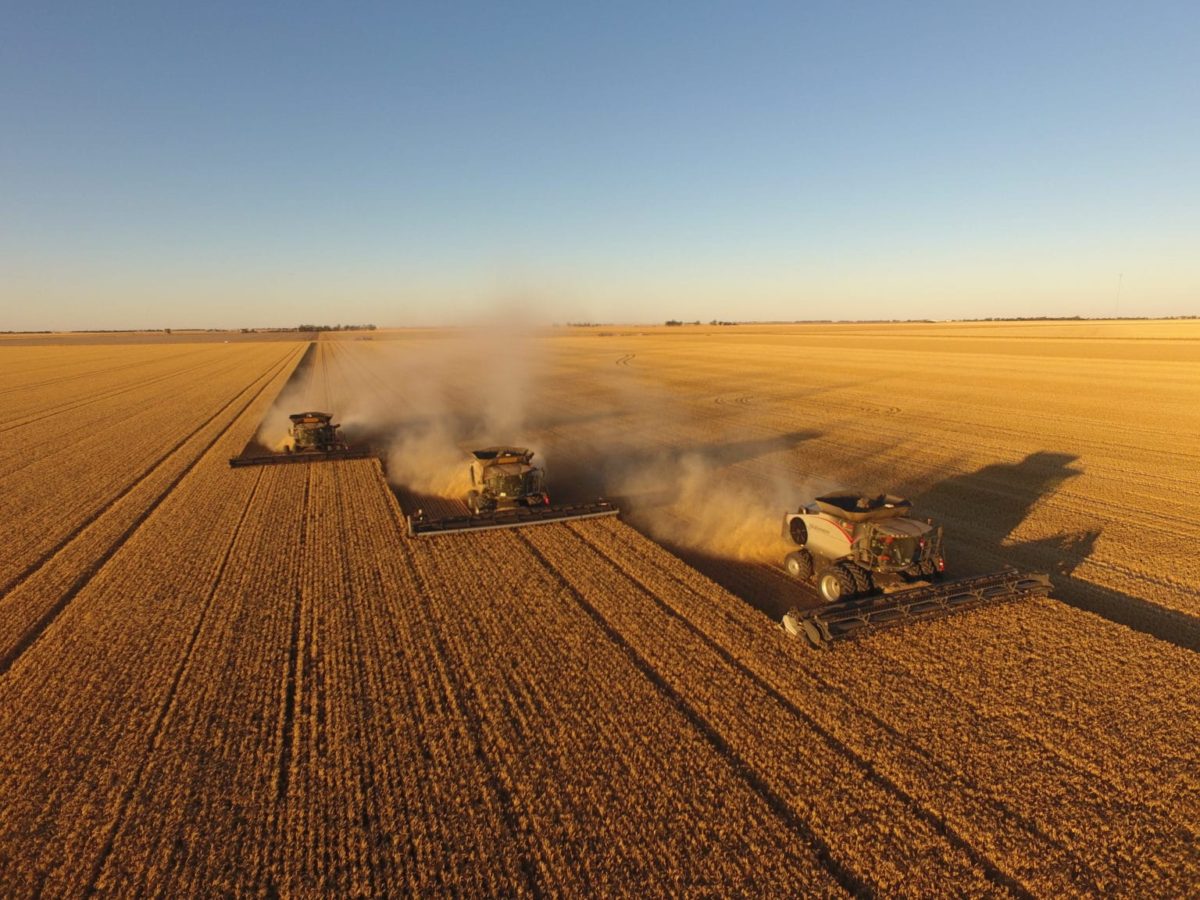The objective of the Energy Independent Farming (EIF) partnership is to take big agricultural enterprises offgrid, powered by renewable energy, while generating enough green hydrogen through electrolysis to replace all of their diesel energy consumption. In April, EIF secured AUD 250,000 ($193,160) in Victorian government funding, under the Australian state’s Agriculture Energy Investment Plan, to develop a replicable model.
“According to our models, any farm of around 8,000 acres and beyond is a candidate for energy independence,” said Thomas Blair of the Blairfarms dynasty, which grows grain near Horsham, Victoria.
His operation, which also specializes in lentils and chickpeas, uses around AUD 200,000 worth of diesel fuel per year. That diesel powers the farm machinery and Blairfarms’ grain-cleaning facility, which runs on diesel-generated power 14 to 18 hours a day.
“Because we’re remote in terms of the grid, we can’t hook up to three-phase power,” Blair told pv magazine Australia. “We’ve been pricing it up for years.”
However, he says that now the price point for going offgrid is comparable – with numerous greater benefits.
Blair was formerly in the armed forces. After his last tour of Afghanistan, he spent a few years with his mother’s family in Denmark. “I needed a bit of time to clear my head,” he said.
It was in Europe that renewable energy infused his consciousness.
“You could go into any household in Denmark, and it wouldn’t be long until the conversation turned to renewables,” he said.
When he returned to Victoria last year, just before the pandemic hit, Blair familiarized himself with the farm accounts. He realized just how much the business was spending on diesel, and the extent of the emissions that were being generated.
“That’s how we formulated our first grant application,” he said. He filed for an energy audit, which set him on a crusade to reduce the farm’s emissions, “starting with our electricity demands.”
Starting point
He began with the idea of rooftop solar on farm buildings, to power their needs and perhaps convert the farm’s three forklifts to run on electricity. The plan kept expanding.
“When I compared fuel-cell EVs versus your standard lithium-battery EVs, I thought, ‘hydrogen has a lot of potential’,” he said.
His research led him to international energy consultant Bradley Warren, who is also the director of Eco U Construction, a building services business based on the Queensland Sunshine Coast that has integrated solar-battery solutions into large real estate and other developments in Australia and overseas.
Energy Independent Farming is the formalization of their new business partnership. It is designed to help farmers contribute to Australia’s decarbonization, save money on energy, and thereby secure their livelihoods as climate conditions for agriculture become less predictable.
This agricultural-renewables journey will begin onsite at Blairfarms, with the installation of three 30 kilowatt solar arrays. It will initially investigate the viability of sodium-ion flow batteries to ensure constant power availability, alongside “a new type of inverter that can step it up to three-phase power,” Warren told pv magazine Australia.
Hydrogen production is a second planned step, using scaled-up PV and perhaps supplementary wind generation. There’s also potential, depending on emerging technologies, to skip batteries and “go straight into hydrogen fuel cells as our storage mechanism, as well as the prime way to move our vehicles and farm machinery,” said Blair.
To continue reading, please visit our pv magazine Australia site.
This content is protected by copyright and may not be reused. If you want to cooperate with us and would like to reuse some of our content, please contact: editors@pv-magazine.com.




Heavy farm vehicles are bad for soil quality as the weight compacts the soil so I wonder if hydrogen tractors and combine harvesters will have an advantage by being much lighter than battery versions, will the batteries of electric tractors and harvesters weigh a few tons ?
The weight of the tractors is not because of the engine and transmission but to give them enough traction to pull the implements, most tractors have suplemental weights or at least water in tyres, so electrification won’t solve the compaction problem by itself.
However, electrification can help solve the problem in other ways. 1. If the tractor is electric, most of the towed bins and implements can easily have powered axles so reducing the need for torque on the tractor axle
A key driver of supersized farm machinery is the cost of operators. Autonomous farming robots don’t have operators so swarms of smaller machines can complete sowing, weeding etc with much lighter ground pressure than traditional machines. I am not sure whether anyone has developed a robotic grain harvester that is significantly lighter than conventional models